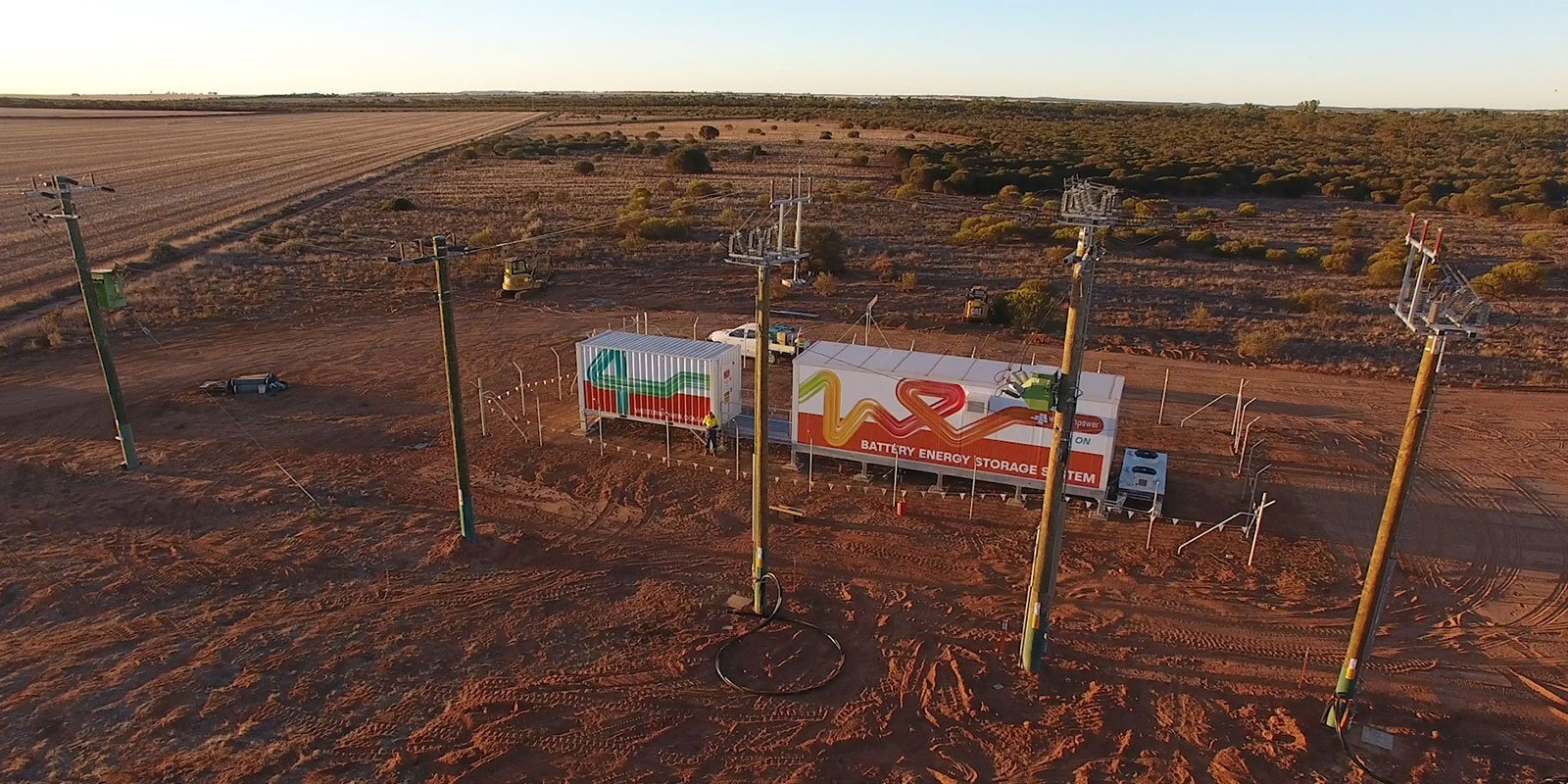Back in 2016, if you were living in the town of Perenjori, power outages were a fact of life.
The town, serviced by a single 75km long feeder power cable from Three Springs, was averaging around 11 outages a year, totalling nearly 30 hours.
“When you get those long single lines like the one running to Perenjori in remote areas, many different things can cause an issue, from falling tree branches through to a more serious fault,” says Ian Anderson from Western Power.
“Although 90 per cent of the time it would be something simple, like a branch falling on the line, it takes time for a linesman to patrol the line, find and remedy the issue - sometimes a few hours. During that time, the town would have no power.”
So Western Power decided to try a world-first to improve the situation – installing a microgrid backed up by a large battery on the outskirts of the town that could instantaneously provide a minimum of two hours of back-up power when the line went down.
“Given most of the time Perenjori only lost power for a couple of hours, the battery would hopefully tide them over while the fix was happening, and reduce the amount of time without power during more serious faults,” says Ian.
“An automated SMS notification system also provides warning to the township of impending outages”
The battery energy storage system, is at the heart of the microgrid. This 1MWh battery was installed as the centrepiece of the Perenjori microgrid which was commissioned in mid-2018. The battery is connected to and kept charged by the main network.
“As it was the first time anyone had installed anything like this in Australia, we learnt a lot through the installation process. It took us longer to integrate the battery into the network than we expected, but we have persevered and it’s now working really well.”
Although the battery was expected to have a minimum of two-hour charge, it has exceeded expectations, typically powering the town for longer stretches of four to five hours.

The town’s residents have been an important part of the process, embracing their role as trial participants and feeding back to help find and rectify issues.
One of the big successes has been the SMS message the Perenjori residents receive when the line goes down, letting them know that the battery has kicked in and is supplying them with power they otherwise wouldn’t have had. It also lets them know if BESS is running low on power, so they can prepare for a potential outage rather than be caught off guard.
“The residents have said that having the notification the power is going down has let them plan around outages better. Things like cooking dinner early before the power is disrupted, and knowing to reduce their power load while the battery is on to help extend the charge.
“We feel this really has been a great collaboration and we’re grateful for the spirit in which Perenjori has embraced this trial.”
The 2019 report suggests the battery is really paying off, with Perenjori experiencing just under six hours total of outages for the year, compared to nearly 30 hours two years previously.
“We have had less issues on the feeder line this year, so typically the number of outages would be higher. But either way the battery has covered most of the ones that have happened, so the town only had five hours total of power outages last year.
“The battery also helped us with planned maintenance works, supplying power to the town during recent works. That meant we’ve been able to do upgrades to the line without impacting homes or businesses in the Perenjori township at all.
“Now we’ve tested and shown how well this kind of microgrid backed up with a large battery unit can work for end of the line locations, we can look to other places where this might work as part of our modular and autonomous network.
“It feels great to have some real solutions for our rural customers.”
Posted 14 January 2020